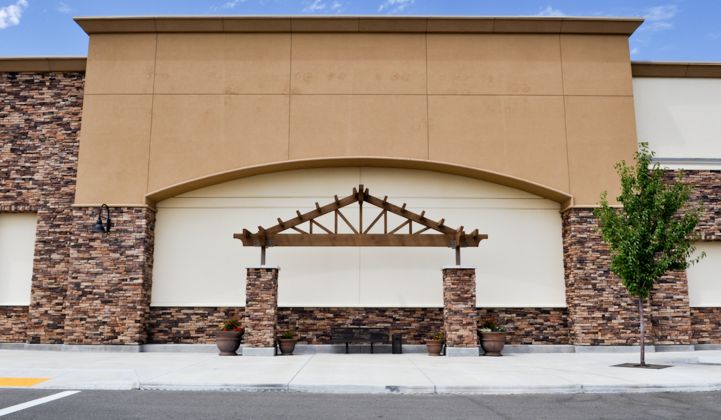If solar is going to meet a meaningful portion of America's energy needs, it needs to find more markets. A new report examines a market that's still largely untapped: the rooftops of big-box stores.
The report, released by Environment America and the Frontier Group, details why these rooftops are “perfect" for solar PV projects. The reasons are obvious. The rooftops of big-box stores are largely flat, vacant, and also plentiful.
Super stores represent a high-growth area in the non-residential market. But there are serious challenges to implementation.
Policy and financing aren’t necessarily hurdles -- it's customer acquisition, as well as the lengthy and costly sales process.
The report groups super stores, grocery stores and malls, and finds that these businesses account for 5 percent of domestic electricity use. These buildings also encompass 102,000 locations with 4.5 billion cumulative square feet.
Their rooftops could host 62.3 gigawatts of solar photovoltaic capacity -- the equivalent capacity of more than 7 million homes in the United States.
The report also detailed the economics of utilizing all that rooftop space. Since the projects would be large -- but still distributed -- putting solar on all those big-box stores could help lower transmission losses, which totaled an estimated 203 million megawatt-hours, or 5 percent of electricity sales in 2012, according to the Energy Information Administration.
Big-box stores spend on average $190,000 on electricity bills per year. The report estimates that solar could offset electricity use by 42 percent -- saving these businesses $8.2 billion annually.
“That’s a pretty good business case," said Bret Fanshaw, co-author of the report and Environment America’s solar program coordinator.
Movement is already well underway sector. Ikea has more than 41 megawatts of rooftop solar installed, and Wal-Mart, the biggest company noted in the report, has at least 142 megawatts of total on-site installed solar capacity across 348 locations.
It's meaningful progress, Fanshaw said, but only a fraction of the potential. As an example, Wal-Mart’s 680 million square feet of rooftop space could harness an 5,844 megawatts of PV capacity.
Roadblocks to full potential
If the numbers are so promising, and solar can save companies so much money, what’s the holdup?
It's closing customers.
“The biggest bottleneck to developing these types of properties is the customer acquisition,” said Nicole Litvak, a senior solar analyst with GTM Research.
Financing isn’t an obstacle for most big companies, she said. They have assets and are credit-worthy, and there are tax equity investors willing to finance a power-purchase agreement.
It takes time for a developer to build relationships with the various people in a company who need to sign off on a project, while the project itself requires upfront capital. Additionally, there aren’t many solar companies that have national-level expertise. A chain might do a pilot program, but it might not continue its relationship with the developer. This can limit scale.
Moreover, it might not make sense to use solar in certain states due to lack of incentives or inexpensive available electricity, Litvak said. Just because a report proves there's a lot of potential on big-box rooftops doesn't mean it'll be possible to harness all of them.
But assuming the customer acquisition process can be handled cost-effectively, targeting large swaths of big-box stores is one of the best opportunities in the non-residential market.
“Getting each separately may be more time-consuming, but you’ll end up with a bigger deal that’s easier to finance,” said Litvak.



